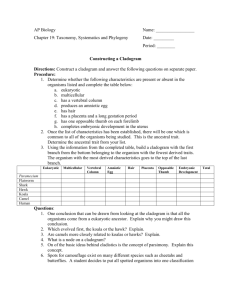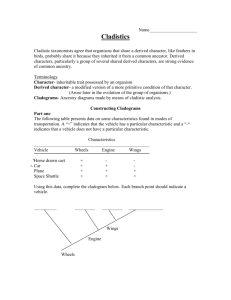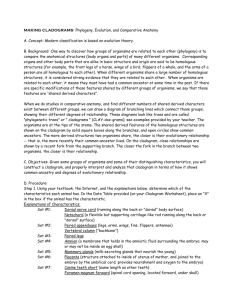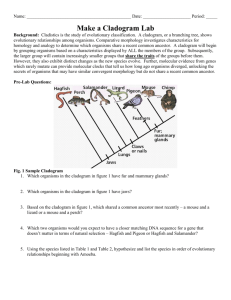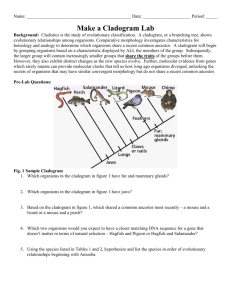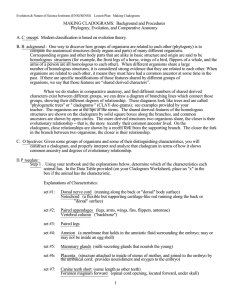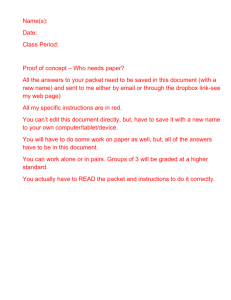class copy…..do not write on this
advertisement
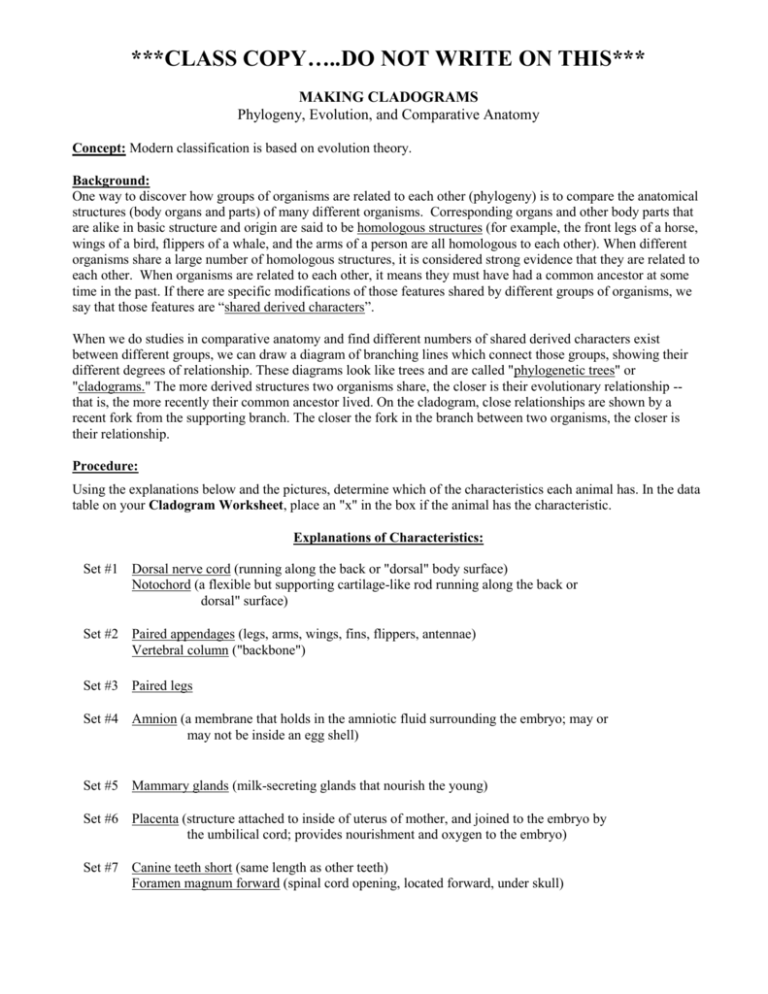
***CLASS COPY…..DO NOT WRITE ON THIS*** MAKING CLADOGRAMS Phylogeny, Evolution, and Comparative Anatomy Concept: Modern classification is based on evolution theory. Background: One way to discover how groups of organisms are related to each other (phylogeny) is to compare the anatomical structures (body organs and parts) of many different organisms. Corresponding organs and other body parts that are alike in basic structure and origin are said to be homologous structures (for example, the front legs of a horse, wings of a bird, flippers of a whale, and the arms of a person are all homologous to each other). When different organisms share a large number of homologous structures, it is considered strong evidence that they are related to each other. When organisms are related to each other, it means they must have had a common ancestor at some time in the past. If there are specific modifications of those features shared by different groups of organisms, we say that those features are “shared derived characters”. When we do studies in comparative anatomy and find different numbers of shared derived characters exist between different groups, we can draw a diagram of branching lines which connect those groups, showing their different degrees of relationship. These diagrams look like trees and are called "phylogenetic trees" or "cladograms." The more derived structures two organisms share, the closer is their evolutionary relationship -that is, the more recently their common ancestor lived. On the cladogram, close relationships are shown by a recent fork from the supporting branch. The closer the fork in the branch between two organisms, the closer is their relationship. Procedure: Using the explanations below and the pictures, determine which of the characteristics each animal has. In the data table on your Cladogram Worksheet, place an "x" in the box if the animal has the characteristic. Explanations of Characteristics: Set #1 Dorsal nerve cord (running along the back or "dorsal" body surface) Notochord (a flexible but supporting cartilage-like rod running along the back or dorsal" surface) Set #2 Paired appendages (legs, arms, wings, fins, flippers, antennae) Vertebral column ("backbone") Set #3 Paired legs Set #4 Amnion (a membrane that holds in the amniotic fluid surrounding the embryo; may or may not be inside an egg shell) Set #5 Mammary glands (milk-secreting glands that nourish the young) Set #6 Placenta (structure attached to inside of uterus of mother, and joined to the embryo by the umbilical cord; provides nourishment and oxygen to the embryo) Set #7 Canine teeth short (same length as other teeth) Foramen magnum forward (spinal cord opening, located forward, under skull) Using the data in your table, draw a cladogram on your worksheet to illustrate the ancestry of these animals. The diagram should reflect shared characteristics as time proceeds. An example is shown below. Notice how the different animals are all at the same time level (across the top) since they all live today. Tuna Horse Human Foramen Magnum Forward Example Cladogram: Placenta Backbone INTERPRETING CLADOGRAM: a. Clade Placenta- includes Horses and Humans. b. Humans and Horses are more closely related than Humans and Tuna. c. Tuna, Horses and Humans all share the derived characteristic of having backbones. d. Horses and Humans share the derived characteristic of having a placenta, but NOT Tuna. e. Humans have the most derived characteristics. Tuna has the least derived characteristics. f. The common ancestor of all three animals had a backbone.
